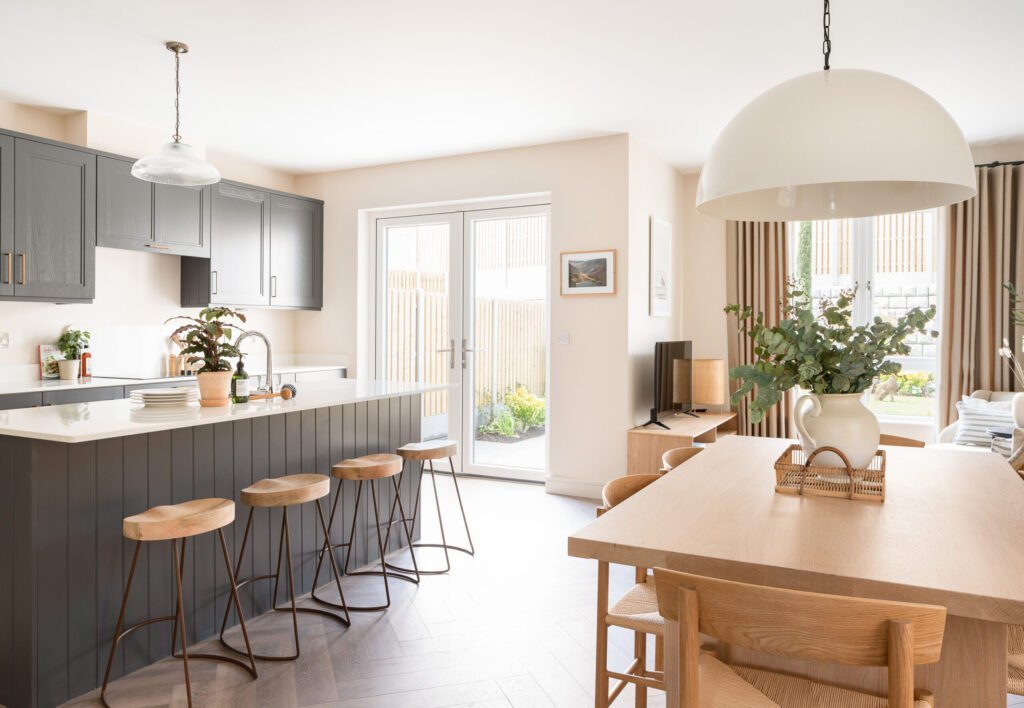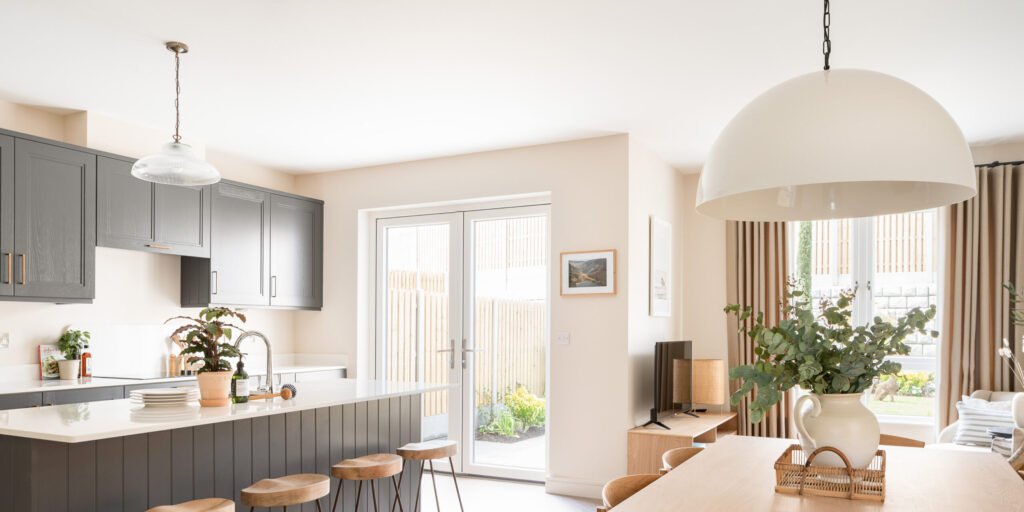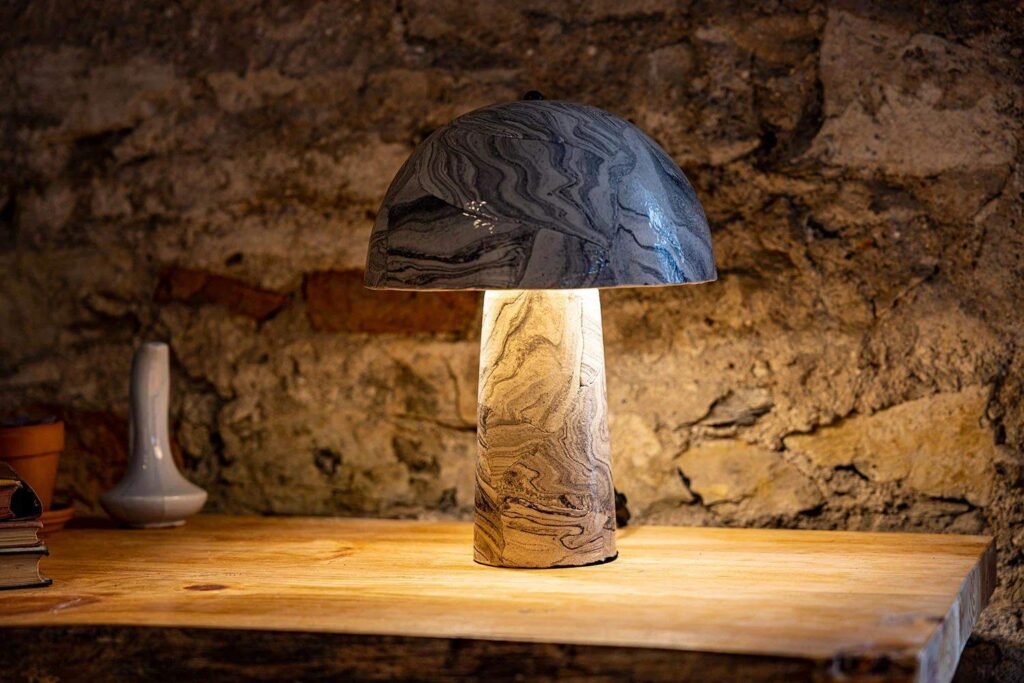6 Reasons Why Your Home Needs a Lighting Plan
Creating a comprehensive lighting plan for your home is essential for maximizing both functionality and ambience in your living spaces. A well-thought-out lighting design ensures that each room in your home is adequately illuminated for various activities, ranging from doing homework and reading to entertaining guests and engaging in daily routines. By strategically planning your home lighting, you can enhance the overall experience in each area, making it more versatile and adaptable to different needs.

Bright and airy open plan, using bright and simple light lighting
One of the primary benefits of a structured lighting plan is the flexibility it offers. For instance, a kitchen requires bright, focused lighting for tasks such as cooking and food preparation, whereas a living room may benefit from adjustable lighting that can be dimmed for watching movies or brightened for social gatherings. Implementing layered lighting, which includes ambient, task, and accent lighting, allows you to create the best lighting designs for small spaces and larger areas alike, ensuring every corner of your home is functional and inviting.
Good lighting also plays a crucial role in setting the mood and enhancing the aesthetic appeal of a room. Warm, soft lighting can create a cozy and welcoming atmosphere, perfect for relaxation and unwinding after a long day. On the other hand, brighter, cooler lighting can invigorate a space, making it more conducive to productivity and focus. By thoughtfully selecting and positioning different types of light fixtures, you can transform the ambiance of your home to suit your lifestyle and preferences.
Moreover, a carefully curated lighting plan can highlight architectural features, artwork, and décor, adding depth and dimension to your spaces. Accent lighting, for instance, can be used to draw attention to specific elements, creating focal points that enhance the overall design. By integrating home lighting ideas that cater to both practical and aesthetic needs, you can create a harmonious and functional living environment that elevates your home’s interior.
Understanding the Three Types of Lighting
When developing a lighting plan for your home, it’s crucial to understand the three essential types of lighting: ambient, task, and accent lighting. Each serves a unique purpose, and their strategic combination can transform your living spaces into functional and aesthetically pleasing environments.
- Ambient lighting, often referred to as general lighting, provides overall illumination, ensuring that a room is well-lit and comfortable. It sets the tone for the space and typically includes ceiling fixtures, wall-mounted fixtures, and recessed lights. The goal of ambient lighting is to create a uniform level of light throughout the room, allowing you to safely navigate and perform basic activities.
- Task lighting, as the name suggests, is focused on illuminating specific areas where particular activities are performed, such as reading, cooking, or working. This type of lighting is usually more concentrated and brighter than ambient lighting. Examples of task lighting include desk lamps, under-cabinet kitchen lights, and pendant lights over a workspace. Proper task lighting reduces eye strain and enhances productivity by providing adequate visibility for detailed activities.
- Accent lighting is used to highlight specific features within a space, such as artwork, architectural elements, or decorative objects. It adds depth and dimension to a room by creating visual interest and drawing attention to particular areas. Common accent lighting fixtures include track lights, wall-mounted picture lights, and spotlights. When used effectively, accent lighting can transform ordinary spaces into dynamic and visually engaging environments.
Layering these three types of lighting is key to achieving a balanced and versatile lighting scheme. By thoughtfully integrating ambient, task, and accent lighting, you can tailor the illumination to suit different functions and moods within your home. For more detailed explanations on how to implement these lighting types, refer to our previous blog post, ‘How to Make Light Work in Your Home.’
Assessing Your Space
When developing a lighting plan for your home, it is crucial to start by thoroughly assessing your space. This begins with evaluating the size of each room, as the dimensions will significantly influence your lighting choices. Larger rooms may require multiple light sources to ensure even illumination, while smaller spaces might benefit from more strategic lighting designs to maximize the area.
Another key factor to consider is the color scheme of your rooms. Light-colored walls and furnishings reflect light and can make a room feel more spacious and airy. Conversely, darker colors absorb light, which might necessitate additional or brighter lighting to achieve the desired ambiance. Understanding the interplay between your color scheme and lighting can help you make informed decisions about the type and placement of your light fixtures.
Natural light sources, such as windows, skylights, and doors, play a pivotal role in determining the best lighting designs for small spaces. Observing the direction and intensity of natural light throughout the day is essential. Take note of which areas receive the most sunlight and during what times, as well as the spots that remain dimly lit. This information can guide you in supplementing natural light with artificial lighting where necessary.
To accurately assess natural light, spend a day observing how light moves through your space. Morning light often enters from the east, creating bright, warm illumination, whereas afternoon light from the west can be harsher and more direct. North-facing rooms typically receive softer, more diffused light, while south-facing rooms benefit from consistent brightness throughout the day. By understanding these patterns, you can better plan your home lighting ideas to complement and enhance the existing natural light.
Documenting these observations is beneficial. Take photos at different times or keep a journal noting the light levels and the impact they have on your space. This will help you identify the brightest and dullest spots, guiding you in selecting and positioning your lighting fixtures to create a balanced and functional lighting plan for your home.
Determining Room Usage
Understanding the primary and secondary functions of each room is crucial when developing an effective lighting plan for your home. By considering the various activities that will take place, you can tailor your lighting solutions to meet specific needs, thereby enhancing both functionality and aesthetics.
Begin by identifying the primary activities for each room. For instance, a kitchen might primarily be used for cooking, but it can also serve as a dining area and a space for entertaining guests. Similarly, a living room could function as a place for relaxation, social gatherings, and even occasional work. Recognizing these diverse purposes allows you to select versatile lighting designs that accommodate all intended uses.
Next, think about the times of day when each room will be used most frequently. Morning routines might necessitate bright, energizing light in the bathroom and kitchen, while evening activities could require softer, ambient lighting in the living and dining areas. By aligning your lighting choices with the natural rhythms of your household, you can create a more comfortable and efficient living environment.
It’s also important to consider who will be using the room. Adults, children, and guests have different lighting needs. For example, task lighting is essential in a home office to reduce eye strain, while adjustable, dimmable lights might be more suitable for a child’s bedroom to accommodate both playtime and bedtime. Guest rooms should feature welcoming lighting that makes visitors feel at home while being functional for varying needs.
By thoughtfully analyzing the usage patterns and occupants of each room, you can implement the best lighting designs for small spaces that maximize both practicality and style. These home lighting ideas will not only illuminate your living spaces effectively but also enhance the overall ambiance, making your home more inviting and enjoyable for everyone.
Planning Furniture Layout and Electrical Points
When developing a lighting plan for your home, understanding the proposed furniture layout is paramount. The arrangement of furniture directly influences the placement of sockets and switches, ensuring both convenience and functionality. It is essential to strategically position electrical points where they will be easily accessible and practical.
Start by mapping out the room and noting where key pieces of furniture will be located. For instance, consider placing sockets near bedside tables, behind entertainment centers, or next to desks. This thoughtful placement minimizes the need for extension cords and clutter, enhancing the room’s aesthetic while providing easy access to power sources.
Switches should also be positioned for optimal convenience. Common practice includes placing switches at the entrance of the room, allowing for easy access as you enter and leave. Dimmer switches can be a valuable addition, offering flexibility in controlling the lighting ambiance to suit various activities and times of day. It’s wise to consider the best lighting designs for small spaces, as they often require more careful planning to maximize functionality without overwhelming the room.
Future-proofing your lighting plan is another crucial aspect to consider. By anticipating potential changes in room configuration, you can create a versatile and adaptable lighting scheme. For example, installing additional sockets in strategic locations allows for flexibility should you decide to rearrange furniture or add new electronic devices. Similarly, consider the use of smart lighting systems, which can be easily reprogrammed to accommodate new layouts and preferences.
Effective planning of furniture layout and electrical points not only enhances the usability of your home but also ensures that your lighting plan can adapt to future changes. By prioritizing accessibility, convenience, and flexibility, you can create a cohesive and efficient lighting design that meets both current and future needs.
Highlighting Architectural Features and Decor
When developing a lighting plan for your home, it is essential to identify architectural features or decor items that you want to highlight. These can include a piece of art, an intricate architectural detail, or a focal point in the room. The best lighting designs for small spaces often incorporate accent lighting to draw attention to these features and enhance the overall aesthetic.
For example, an elegant piece of art hanging on the wall can be accentuated with a picture light. This type of light fixture is designed to illuminate artworks without causing glare, ensuring that the colors and details are vividly highlighted. Similarly, track lighting can be strategically placed to spotlight specific areas, such as a bookshelf or a sculpture, allowing these items to become focal points within the room.
Architectural features such as exposed brick walls, wooden beams, or a fireplace can also benefit from well-placed lighting. Recessed lights installed along the perimeter of the ceiling can cast a soft glow that highlights the texture and depth of these elements. Wall sconces placed on either side of a fireplace can create a balanced and inviting ambiance, drawing the eye to this central feature.
In smaller spaces, where maximizing both functionality and aesthetics is paramount, incorporating task and ambient lighting in conjunction with accent lighting can create a layered effect that prevents the room from feeling cluttered. For instance, under-cabinet lighting in a kitchen can highlight a beautifully tiled backsplash while providing additional task lighting for food preparation areas.
By thoughtfully integrating accent lighting into your home lighting ideas, you can enhance the visual interest of your space and ensure that your most cherished decor items and architectural features are presented in their best light. This approach not only adds depth and dimension to your interiors but also allows you to showcase your personal style beautifully.
Choosing the Right Types of Lights
Creating a well-thought-out lighting plan is essential for enhancing the functionality and aesthetics of your home. A crucial step in this process is selecting the appropriate types of lights that cater to both decorative and functional needs. Understanding the differences between these two categories can greatly influence the ambiance and usability of each space within your home.
Decorative lighting primarily serves an aesthetic purpose, adding to the visual appeal of a room. Examples include chandeliers, pendant lights, and wall sconces. These fixtures often act as focal points and can significantly contribute to the room’s overall design theme. Functional lighting, on the other hand, focuses on practicality and utility. This category includes task lighting like desk lamps, under-cabinet lights in kitchens, and reading lights in bedrooms. Combining these types of lighting ensures a balanced and versatile lighting plan.
When it comes to ambient light sources, several options are available depending on the room and its intended use. Central pendant lights and chandeliers are excellent choices for living rooms or dining areas, providing widespread illumination and a touch of elegance. Ceiling lights, such as flush mounts or semi-flush mounts, offer practical solutions for hallways and bedrooms, ensuring even distribution of light without overwhelming the space. Table lamps, whether placed on side tables or desks, offer flexibility and are ideal for reading nooks or workspaces.
Each room in your home has unique lighting requirements. For instance, kitchens benefit from a combination of ceiling lights and under-cabinet lighting to ensure work surfaces are well-lit. In contrast, bedrooms often require a mix of ambient and task lighting to create a cozy yet functional environment. By carefully selecting and combining different types of lights, you can develop a comprehensive lighting plan that enhances both the functionality and aesthetic appeal of your home.
Tips for Developing Your Lighting Plan
Creating a comprehensive lighting plan for your home is a meticulous process that benefits from careful consideration and patience. Rather than rushing through, take your time to jot down thoughts and ideas over several days. Keeping a notebook handy can be tremendously beneficial for documenting observations, inspirations, and evolving thoughts on the best lighting designs for small spaces and other areas in your home.
Begin by assessing each room individually, considering its purpose and the activities that will take place there. Think about the natural light available and how it changes throughout the day. These observations will help you determine the type and placement of artificial lighting required. For instance, task lighting is essential in areas like the kitchen and home office, while ambient lighting creates a warm and inviting atmosphere in living rooms and bedrooms.
To ensure all aspects of your lighting needs are covered, break down your plan into categories such as ambient, task, and accent lighting. Ambient lighting provides overall illumination, task lighting focuses on specific activities, and accent lighting highlights architectural features or decor. Each type serves a unique purpose, and a well-rounded plan will integrate all three seamlessly.
Review and refine your lighting plan periodically. As your understanding of your space and needs evolves, so too should your plan. This ongoing process allows you to make adjustments and improvements, ensuring your lighting remains functional and aesthetically pleasing. Consider the latest home lighting ideas and trends, which can offer innovative solutions and inspire creative approaches to your design.
Ultimately, developing a lighting plan is an iterative process that requires thoughtful reflection and a willingness to adapt. By taking the time to carefully plan and refine your approach, you’ll be better equipped to create a well-lit, comfortable, and visually appealing home environment.


